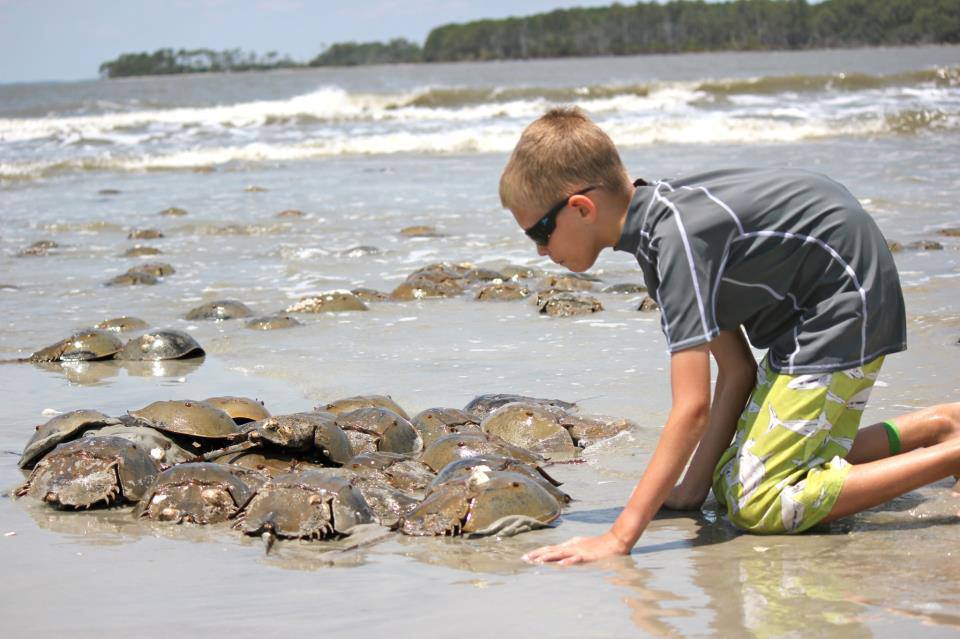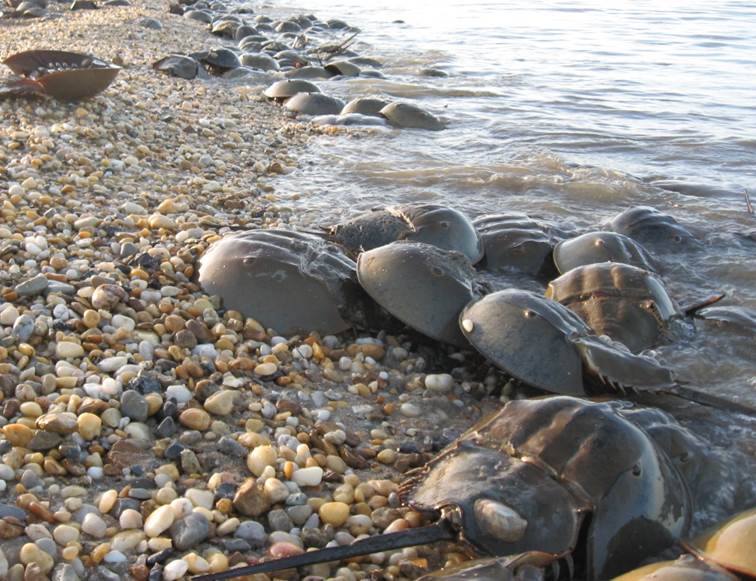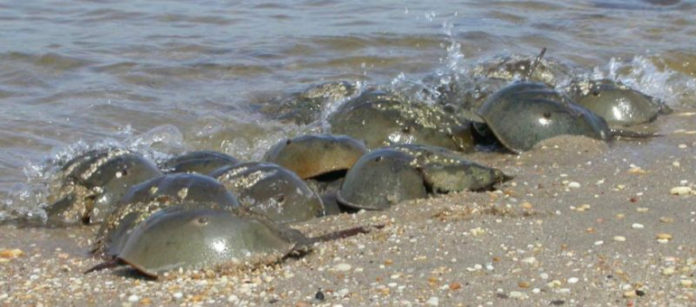Walk along our local beaches right now and you may see odd creatures that look like they belong in the dinosaur age. They’re our Lowcountry horseshoe crabs, and it’s mating season, a tradition that’s been going on for 445 million years, not just here in the Lowcountry…but everywhere.
The water is warming, and with our spring full moons, the timing is perfect for horseshoe crabs coming ashore to lay eggs.
Horseshoe crabs are one of our most beloved invertebrates. Part of their charm is that they are approachable, harmless and capable of creating a spectacle when they emerge from the water to spawn on the shore.
Late April or early may, during the full moon cycle is when they spawn, and it can be quite a sight to see on beaches all over the East Coast. The greatest congregation of them in the world is in the Delaware Bay, but they’re everywhere.
Horseshoe crabs are sometimes called living fossils because they’ve been around for millions of years and survived when other species didn’t. The females are larger than males, some as big as a dinner plate. The shell has a horseshoe shape and from a few steps back they look like shallow green Army helmets.

Same cycle for 455 million years
Now is the time of year when horseshoe crabs arrive on the beaches enmasse to lay their eggs. Crabs arrive on the spawning beaches during the high tides of full and new moons when the water rises highest on the beach. When the female is ready to lay her eggs, she crawls up to the high waterline on the beach with a male attached to her.
The male clasps onto the female’s shell with a modified pair of claws. The female drags him around during the spawning process. In addition to the attached male, several other males may also attempt to fertilize the female’s eggs by arranging themselves on and around the spawning couple during the egg-laying process.
A female may have five or more males attempting to mate with her in a single egg-laying episode.
During spawning, the female crab partially buries herself in the sand while she deposits a cluster of about 4,000 tiny green eggs. In an evening of egg laying, a female crab can lay several egg clusters, and she may spawn repeatedly over several nights to lay 100,000 or more eggs.

As usual, humans and others in nature have found useful means for horseshoe crabs. The fishing industry uses horseshoe crabs for bait. Migratory birds eat their eggs. And biomedical companies use their blue blood to make a special clotting agent which has helped save millions of human lives.
Lowcountry Horseshoe crabs occupy other notable links in the food web as well. A few anecdotes report horseshoe crabs turning up in alligator and shark bellies. But neither of these large toothy animals is known for being a picky eater.
Tis’ the season for horseshoe crab spawning and our beaches may look like this for a little while.
What a sight.










